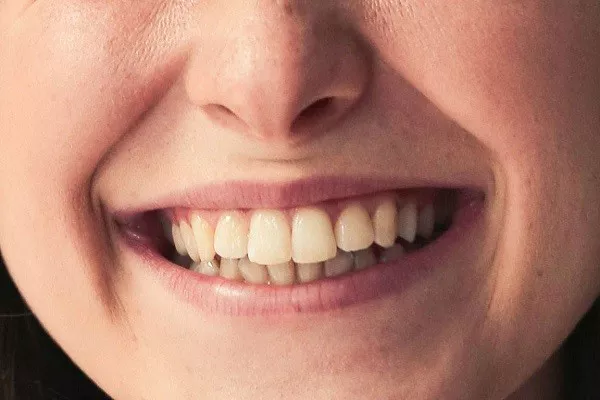Dental fillings are a common dental procedure that is used to treat cavities and restore damaged teeth. After getting a filling, it is important to take good care of your teeth to ensure that the filling lasts as long as possible. One question that many patients have is whether they can floss after a tooth filling. In this article, we will answer that question and provide you with all the information you need to know about flossing after a tooth filling.
Can you floss after a tooth filling?
Yes, you can and should floss after a tooth filling. In fact, it’s important to maintain good oral hygiene habits after any dental procedure, including fillings.
Flossing helps remove food particles and plaque from between your teeth and along the gum line, which can help prevent cavities, gum disease, and other oral health issues. When you have a tooth filling, it’s important to keep the area clean and free of debris to help prevent further decay and maintain the integrity of the filling.
While you may experience some sensitivity or discomfort around the filling site for a few days after the procedure, it’s still important to floss gently and thoroughly. Your dentist may recommend waiting a day or two after the filling to begin flossing, but once you’re ready to start, be sure to floss carefully and avoid putting too much pressure on the filling.
In some cases, your dentist may recommend using a special type of floss or a floss threader to help you navigate around the filling without causing damage. They may also recommend using an antibacterial mouthwash to help kill bacteria and prevent infection.
If you’re experiencing any pain, discomfort, or bleeding when flossing around a filling, be sure to consult with your dentist. They can help you address any issues and provide guidance on the best flossing techniques for your specific situation. With proper care and attention, you can maintain good oral health and protect the longevity of your dental fillings.
How to floss after a tooth filling
When it comes to flossing around a filling, it’s important to be gentle and take care to avoid damaging the filling or the surrounding area. Here are some more tips and techniques for flossing after a tooth filling:
1. Choose the right type of floss
There are different types of dental floss available, including waxed floss, unwaxed floss, and dental tape. Waxed floss is a good option for tight spaces, while unwaxed floss is better for larger gaps. Dental tape is wider and flatter than floss, making it a good option for wider gaps.
2. Use the proper technique
Start by breaking off about 18 inches of floss. Wind most of it around one of your middle fingers, leaving an inch or two of floss to work with. Hold the floss tightly between your thumbs and forefingers, and gently slide it up and down along the side of the tooth. Curve the floss around the base of the tooth and gently move it back and forth to remove any debris or plaque. Repeat on the other side of the tooth, making sure to be gentle around the filling area.
3. Consider using a floss threader
If you have a large filling or a dental bridge that makes it difficult to floss, a floss threader can be a helpful tool. A floss threader is a small plastic tool that allows you to thread the floss through tight spaces and around dental work.
4. Be gentle
When flossing around a filling, it’s important to be gentle and avoid putting too much pressure on the filling or the surrounding area. Use a light touch and take care not to pull the floss too hard.
5. Take your time
Flossing after a tooth filling can take a bit longer than usual, as you need to be careful and take your time to avoid damaging the filling. Set aside a few extra minutes each day to make sure you can floss thoroughly and gently.
6. Don’t forget to floss between all your teeth
While it’s important to be careful when flossing around a filling, it’s still important to floss between all of your teeth to maintain good oral health. Don’t skip any teeth, and take care to floss gently and thoroughly between each one.
7. Consult with your dentist
If you’re having difficulty flossing around a filling or if you’re experiencing any pain or discomfort, be sure to consult with your dentist. Your dentist can provide guidance on the best flossing techniques for your specific situation and help you address any issues that may arise.
Potential problems with flossing after a tooth filling
1. Pain or discomfort while flossing:
- Can be caused by the filling settling or shifting
- If pain persists, contact your dentist
2. Bleeding gums:
- Can be a sign of gingivitis or improper flossing technique
- Be gentle when flossing and consult your dentist if bleeding persists
3. How to address these issues:
- Consult your dentist if you experience any pain or discomfort
- Practice proper flossing technique to prevent bleeding gums
Other dental hygiene practices after a tooth filling
1. Brushing techniques:
- Brush gently around the filling area to prevent damage
- Use a soft-bristled toothbrush
- Brush twice a day for two minutes
2. Mouthwash usage:
- Can help to rinse away bacteria and food particles
- Choose a mouthwash that contains fluoride to strengthen the filling
In conclusion, it is important to maintain good dental hygiene after getting a tooth filling. Flossing is an important part of that routine, but there are some precautions that need to be taken when flossing around a filling. Be gentle, use a soft-bristled toothbrush, and wait at least 24 hours after the filling to floss. If you experience any pain or discomfort while flossing, contact your dentist. By practicing proper dental hygiene, you can ensure that your filling lasts as long as possible and maintain good oral health.
Recommended text: How long does a tooth take to heal after filling
































